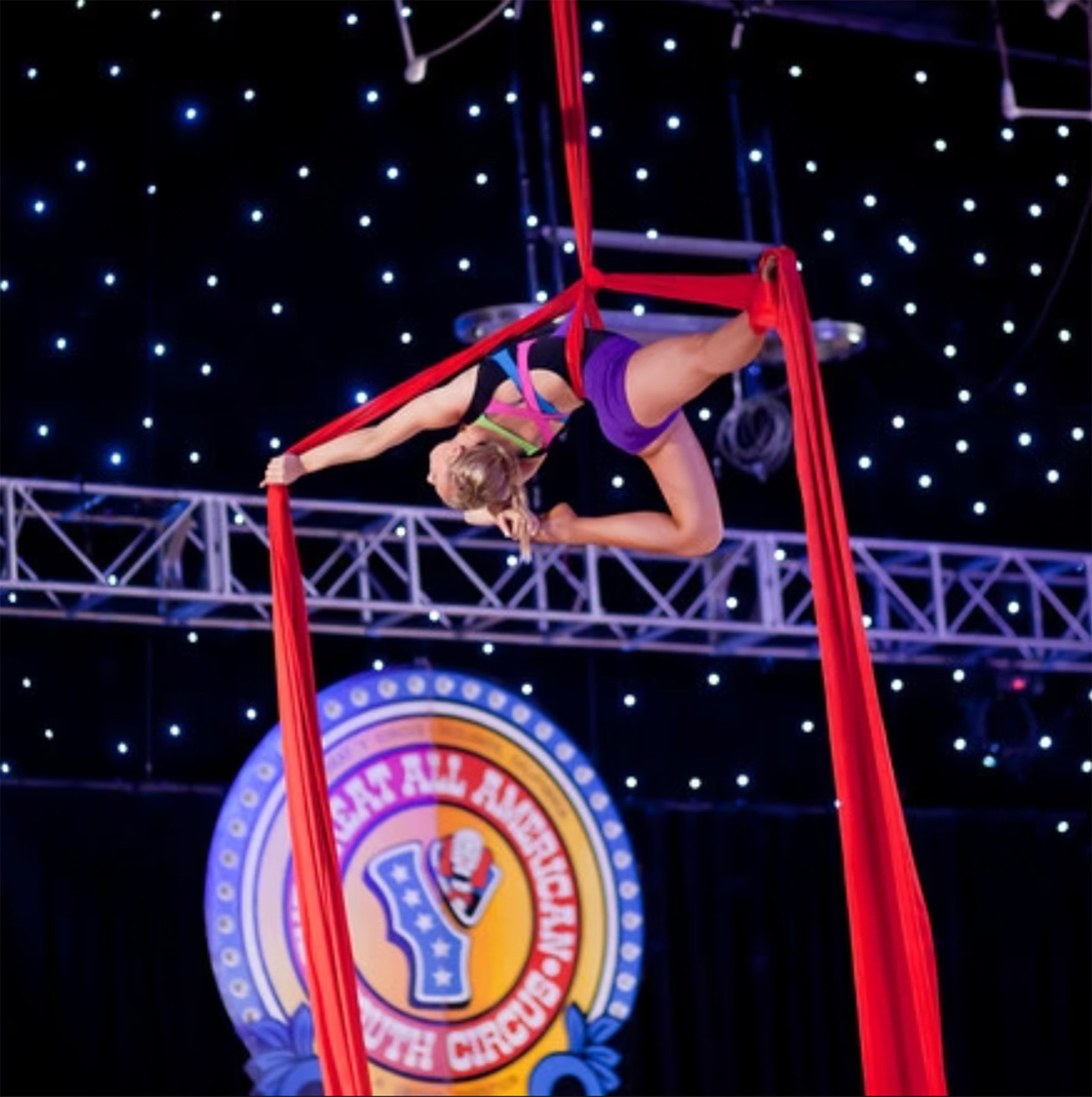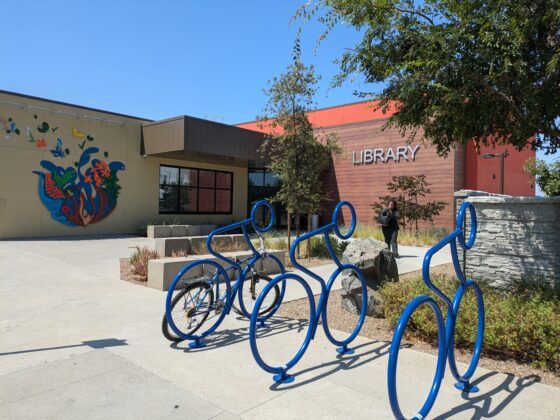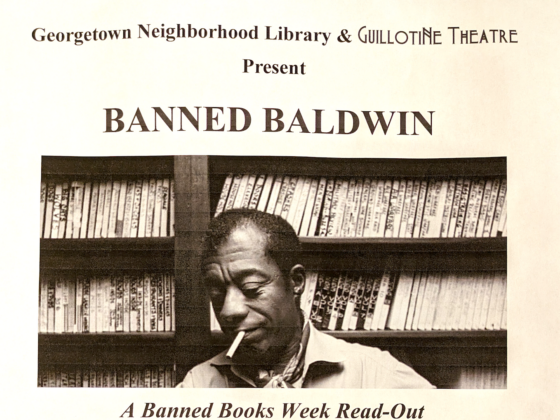For those of you who have always dreamed of running off to join the circus, here is a close second: move to Redlands, California, and join the YMCA. Not only will you get the chance to be a circus star but you’ll also find yourself living in a friendly town with wide palm-lined streets, orange groves, and century-old architecture, not to mention the locally-owned-and-made big four: craft beer, ice cream, chocolate, and coffee. What more could you want?
I went to see Darwin Barnett, the CEO of the Redlands Family YMCA, to find out about the circus, among other things. Barnett has been a lifer in the world of the YMCA, getting his first job there during his college years in Plainview, Texas. He moved up the ranks, and about a year and a half ago, he was looking to find a smallish city where his family could settle in and be part of a strong community.
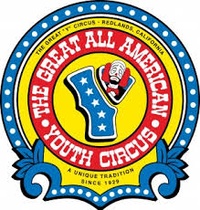
The Redlands Y circus is not just a tumbler’s wanna-be circus. It is The Great Y Circus, as it is fondly called, a serious circus with high-flying acts, trapeze, rings, unicycles, acrobatics, and teeterboard, where one person jumps onto one end of the teetertotter, launching the partner into the air. The Circus was founded Roy Coble, a former performer with the Ringling Brothers Barnum & Bailey Circus, shortly after he moved to Redlands in 1927. Once smitten with the circus; always smitten with the circus.
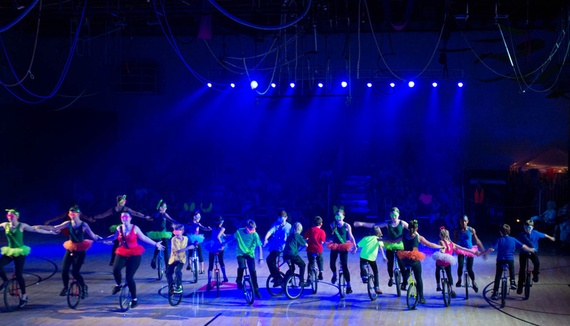
The Past: The YMCA as a town institution. There’s much more to the Y than the circus. Founded in 1887, it is one of the oldest Ys in the country, and the first in southern California to own its own building, which housed storefronts on the street level and the Y upstairs. They grew quickly through a series of bigger buildings, sharing with some of the many religious groups in town, the Baptists, Methodists, and Presbyterians; adding a public reading room, which foreshadowed another great Redlands institution, the A. K. Smiley Public Library; offering a full-service Y with swimming pool, tennis courts, a gym, kitchen, dining room, and offices. They also added camping programs, first at Catalina Island and then at Big Bear in the San Bernardino Mountains, just above Redlands. By the 1920s, the Y had bought 3 acres of citrus groves and expanded to the site of today’s Y complex. Enter about then Roy Coble, who offered a “family night”, which grew into the Redlands Great Y Family Circus.
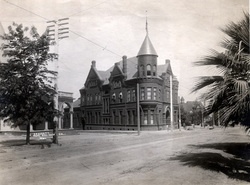
Throughout the 20th century, The Y modernized with additional facilities including racquetball, the gym, outdoor roller hockey, and outdoor pool, a teen/senior center, locker rooms, exercise room, preschool, and nursery. During WWII, they housed a USO and offered sleeping quarters for military on leave. There was nothing, it seems, that the Y couldn’t do.
So, when the Y aimed its sights on a new pool, Barnett recounted to me, even the cavernous gap between the builder’s bid (12 million dollars) and the fundraisers’ prediction for what they could raise (2 millions dollars) didn’t kill the project. In fact, the town rejected the idea of a lesser option to raze and rebuild from new, saying they didn’t want a “shiny new thing” but instead would press on for funds to save and restore the old buildings instead. And you guessed it, they town did raise the entire amount. Darwin Barnett took me on a tour of the newly redone building, with its preserved portions and its new pool.
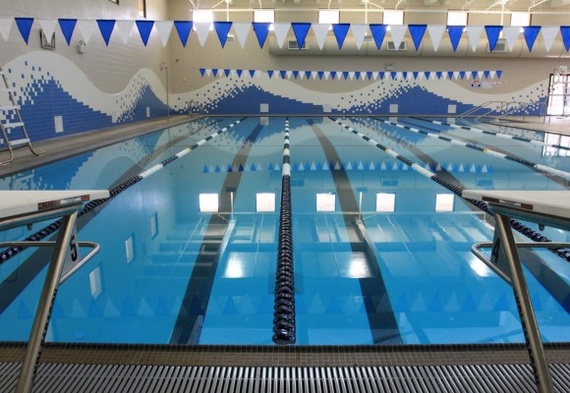
The Y in Redlands is an example of “We can do this” answers to “It can’t be done” declarations that we have seen in other small towns as we’ve flown around America. Holland, Michigan, dug up its downtown commercial street to install underground hot water piping to provide a winterlong snowmelt. Burlington, Vermont, turned around a failing school in the down-and-out part of town to a model magnet school with a waiting list. Eastport, Maine, unboarded its main street buildings in order to open museums, a theater, galleries, and buy-local boutiques. These are examples of the local civic willpower that we are seeing prevail in the small thriving towns around the US.

The Present: a bulwark of the community. Nationwide, the number of YMCAs has been going down. Some simply shuttered, like the Y just west of Redlands in Riverside, CA. It was founded in 1884 and closed abruptly, bankrupt, in January, 2013. Others consolidated. The Y in the bankrupt city of San Bernardino, right next door to Redlands, has been absorbed, along with the Y in neighboring, rural Highland, into the Y structure of Redlands. In these communities adjacent to Redlands, the Y employees about 400 employees in over 50 before and after-school programs for 11,000 kids. In Redlands proper, I saw several of the big signs on some of its additional 13 school sites.

The five days I swam at the Redlands Y, I saw lots of activity: the gym was full of people exercising; the nursery was filled with little kids and their caretakers; the pool was filled with lifeguards-in-training and older citizens, who seemed to be playacting the role of those who needed to be saved. A few high school girls were getting in extra workouts (Redlands High School has its own pool, but it was winter vacation.); people like me were doing laps; kids were taking swimming lessons with their parents watching from the bleachers. The outdoor pool was closed for the season, which always strikes my upper-midwest temperature sensibility as an oddity of California life, since the “winter” season is regularly sunny and in the 70s.
The Future: Networking in a small town. I asked Barnett about the plans for the Y. He said that strategically, they would like to reach deeper into the community, and he described two efforts in that direction.
The first is the youth wellness program. Targeting diabetes and obesity, the Y will partner in 2014 with town’s highly-respected Beaver Medical Clinic (where my husband’s father was a beloved doctor for many years) to add physical activity and sports component to the counseling programs the children and their families already receive. By moving the locale from the hospital to the Y, they give the kids a chance change their language as well. Instead of complaining, “I have to go to the hospital,” they can announce, “I get to go to the Y.” Brilliant.
The second is a new program directed at “summer learning loss”, or what traditionally happens during the slow summer vacation, when kids lose academic momentum and even content, forcing them to spend a few months in the fall repeating what they learned the previous year. The summer online learning program can focus on kids’ individual weak academic points and home in on them for practice and drilling. Last year, 65 kids attended this trial program funded by the LA Times. They worked 1 ½ hours a day on laptops. Success. Not only did they not lose pace, but they gained a half-grade’s achievement in their targeted subjects.
Oh, and about the four other big reasons to move to Redlands, stay tuned for more coming soon on the Hangar 24 brewery, A La Minute ice cream, Parliament craft chocolate, and Augie’s coffeehouse.

